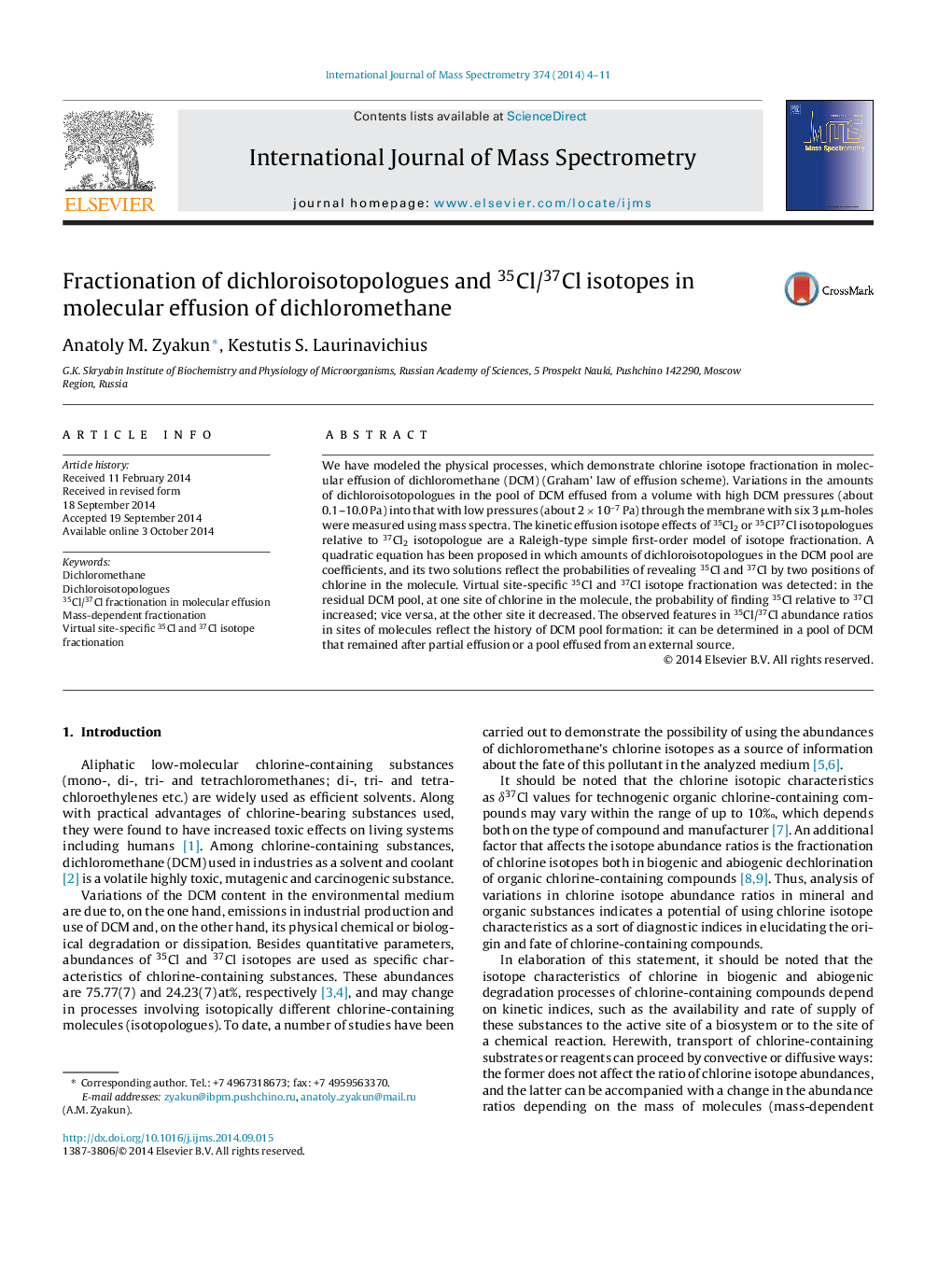| Article ID | Journal | Published Year | Pages | File Type |
|---|---|---|---|---|
| 1192129 | International Journal of Mass Spectrometry | 2014 | 8 Pages |
•We model Cl isotope fractionation in molecular effusion of dichloromethane (DCM).•Chlorine isotope characteristics of dichloroisotopologues of DCM were measured.•Virtual site-specific 35Cl and 37Cl isotope fractionation was observed.•35Cl/37Cl abundance ratios at Cl sites in DCM can reflect its formation history.
We have modeled the physical processes, which demonstrate chlorine isotope fractionation in molecular effusion of dichloromethane (DCM) (Graham’ law of effusion scheme). Variations in the amounts of dichloroisotopologues in the pool of DCM effused from a volume with high DCM pressures (about 0.1–10.0 Pa) into that with low pressures (about 2 × 10–7 Pa) through the membrane with six 3 μm-holes were measured using mass spectra. The kinetic effusion isotope effects of 35Cl2 or 35Cl37Cl isotopologues relative to 37Cl2 isotopologue are a Raleigh-type simple first-order model of isotope fractionation. A quadratic equation has been proposed in which amounts of dichloroisotopologues in the DCM pool are coefficients, and its two solutions reflect the probabilities of revealing 35Cl and 37Cl by two positions of chlorine in the molecule. Virtual site-specific 35Cl and 37Cl isotope fractionation was detected: in the residual DCM pool, at one site of chlorine in the molecule, the probability of finding 35Cl relative to 37Cl increased; vice versa, at the other site it decreased. The observed features in 35Cl/37Cl abundance ratios in sites of molecules reflect the history of DCM pool formation: it can be determined in a pool of DCM that remained after partial effusion or a pool effused from an external source.
Graphical abstractFigure optionsDownload full-size imageDownload high-quality image (166 K)Download as PowerPoint slide
